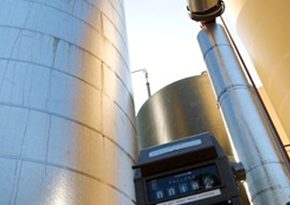Grease Trap Service
We help keep everything in working order.
A grease trap that goes without a service for too long can create severe consequences for your restaurant or food service establishment. Clean Energy Bio Fuels prevents disaster from striking with our convenient and affordable grease trap services. When we visit your location for a service, we will:
- Vacuum and pump out the fats, oils, and grease (FOG) in your grease trap.
- Scrape out any remaining blockages in the grease trap until it’s completely clear.
- Consult with you about your next service date, and give you tips on how to keep your grease trap clean and working properly.
Interested in a used cooking oil pickup?
Call now to get started: 678-318-1785
A grease trap is a device designed to intercept grease before it enters a water system such as a city’s sewer line. Every restaurant or food service establishment is required to have a grease trap. A grease trap is a steel holding tank that captures all the water from restaurant sinks, dishwashers and floor drains. It retains and separates fats, oils, and grease (FOG) because FOG floats above water and can easily be isolated and collected. Metal baffles inside the grease trap tank slow the water’s flow and separate the FOG. A grease trap, sometimes also referred to as grease interceptor, can be indoor (interceptor tank plumbed to a sink) or outdoor (underground interceptor). A grease trap will intercept and collect water that has been used to wash kitchen equipment. This grease would otherwise directly flow into the public water systems and clog the sewer lines and plumbing.
Grease traps require regular servicing and cleaning so that the trap and drain lines will continue to function correctly. Not servicing a grease trap will cause your lines to become clogged and backup inside the restaurant. As you can imagine, if the smelly FOG backs up into the restaurant, it will be a memorable dining experience but for the wrong reasons! Your business needs appropriately functioning plumbing lines to conduct business. Grease trap service involves thoroughly vacuuming and pumping out and all of the remaining FOG and scraping out the grease trap. To perform the cleaning, a specialized pump truck will arrive at the restaurant site and pull up close to the opening of the grease trap. A specially trained employee operator will insert a long metal tube down the opening into the grease trap. The metal tube is essentially just like a vacuum cleaner. The vacuum truck will then suck all of the FOG and bring it into the tanker. Different pumping methods involve either vacuuming out all the FOG and wastewater or just taking out the FOG.
Municipalities and counties regulate the maintenance of grease traps and mandate a regular service and cleaning frequency. Local regulators set the schedule for the owner to have maintenance and service completed. The frequency of grease trap service is determined by several factors including; type of food service establishment, size of the grease trap, thickness of the FOG layer inside of the trap, the amount of food produced at the establishment, seating capacity, and quantity of wastewater producing fixtures (dishwasher, sinks) discharged into the trap. If your grease trap overflows, you can be subject to fines by city or municipality. The amount of the penalty is determined by factors such as the number of previous overflows, and if your grease trap has regularly been serviced.
As part of compliance, all wastewater removed from a grease trap must be recorded in a state certified document or “manifest.” The manifest reports the FOG origin, volume, hauler and final destination of the FOG, (treatment facility). The type of material removed from a grease trap is also recorded on a manifest. During the grease trap service, all gaskets are regularly inspected and replaced if necessary.
An all-in-one grease trap service for your peace of mind.
As part of regular compliance procedures, all restaurants and food service industries must have a regularly-scheduled grease trap service performed at their location on a routine basis. If you want an in-depth, professional job every time you need a service, Clean Energy Bio Fuels is the best option.

State of the Art Equipment
Our specialized pump trucks that we use to perform a grease trap service feature the latest and greatest benefits, and are operated by a highly trained professional.

Avoid Hefty Fines
An overflowing grease trap can have expensive consequences for any restaurant owner. Avoid the fines associated with this disaster by scheduling an on-going service.

An Inspection with Every Service
As part of our grease trap service, we will inspect all parts of your waste collection system, and will alert you of any worrying areas we spot.
Grease trap material or FOG must go through a cleaning process before water can be released into the sewer system. About 90% of the stuff that comes from servicing grease traps is water. The company that does your grease trap service must possess a permit to discharge wastewater into the City’s sewer and collection system. Different licenses are issued based on the type of the business and the volume and characteristics of the wastewater to be discharged.
Brown grease is another industry term for the material that is cleaned out of a grease trap. Brown grease is more difficult to recycle than used cooking oil but can be used to produce biogas as well as biodiesel. A 1998 study by the National Renewable Energy Laboratory found that each person generates about 13 pounds of brown grease per year. With the U.S. population at 300 million, this translates into about 3.9 billion pounds of brown grease per year. Brown grease is a challenge and more costly for recyclers to recycle into biodiesel because of the foul odor and the steps involved in removing food contaminants, emulsification, flow issues (trap grease is solid at room temperature), and water contamination.

